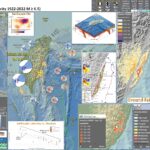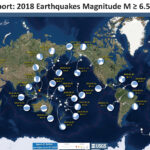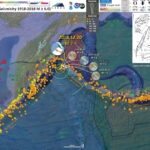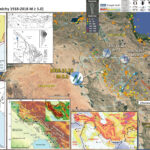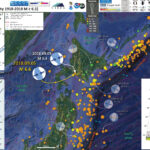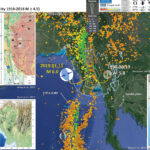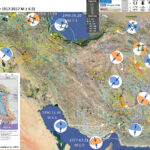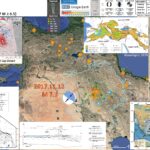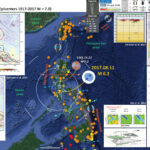I don’t always have the time to write a proper Earthquake Report. However, I prepare interpretive posters for these events. Because of this, I present Earthquake Report Lite. (but it is more than just water, like the adult beverage that…
Earthquake Report: 2018 Summary
Here I summarize Earth’s significant seismicity for 2018. I limit this summary to earthquakes with magnitude greater than or equal to M 6.5. I am sure that there is a possibility that your favorite earthquake is not included in this…
Earthquake Report: Bering Kresla / Pacific plate
We just had a large earthquake in the region of the Bering Kresla fracture zone, a strike-slip fault system that coincides with the westernmost portion of the Aleutian trench (which is a subduction zone further to the east). At first,…
Earthquake Report: Iran
This morning (my time) there was a possibly shallow earthquake in western Iran with a magnitude of M = 6.3. This earthquake occurred in the aftershock zone of the 2017.11.12 M 7.3 earthquake. Here is my report for the M…
Earthquake Report: Hokkaido, Japan
Following the largest typhoon to strike Japan in a very long time, there was an earthquake on the island of Hokkaido, Japan today. There is lots on social media, including some spectacular views of disastrous and deadly landslides triggered by…
Earthquake Report: Burma!
There was an earthquake in Burma today! The epicenter plotted very close to the Sagaing fault (SF), a major dextral (right-lateral) strike-slip fault system, part of the plate boundary between the India and Eurasia plates. This fault system accommodates much…
Earthquake Report: Iran
A couple weeks following the earthquake in eastern Iraq, there was a sequence of earthquakes in central eastern Iran. These earthquakes are too distant to be related. The Iranian sequence includes a M 6.1 foreshock on 2017.12.01 and two M…
Earthquake Report: Iraq
A month and a half ago, I was attending the PATA conference and an earthquake hit Iran and Iraq the night before our first field trip. Thus, I did not have the time to address this earthquake at the time.…
Earthquake Report: Bengkulu (Sumatra)!
Last night (my time) while I was tending to other business, there was an earthquake along the Sunda Megathrust. Here is the USGS website for this M 6.4 earthquake. This M 6.4 earthquake happened down-dip (“deeper than”) along the megathrust…
Earthquake Report: Philippines!
There was a deep focus earthquake in the Philippines today. This shaker was located near the city of Manila (I live in Manila. Manila, California). The hypocenter was quite deep (168 km) so (a) had lesser shaking due to the…

